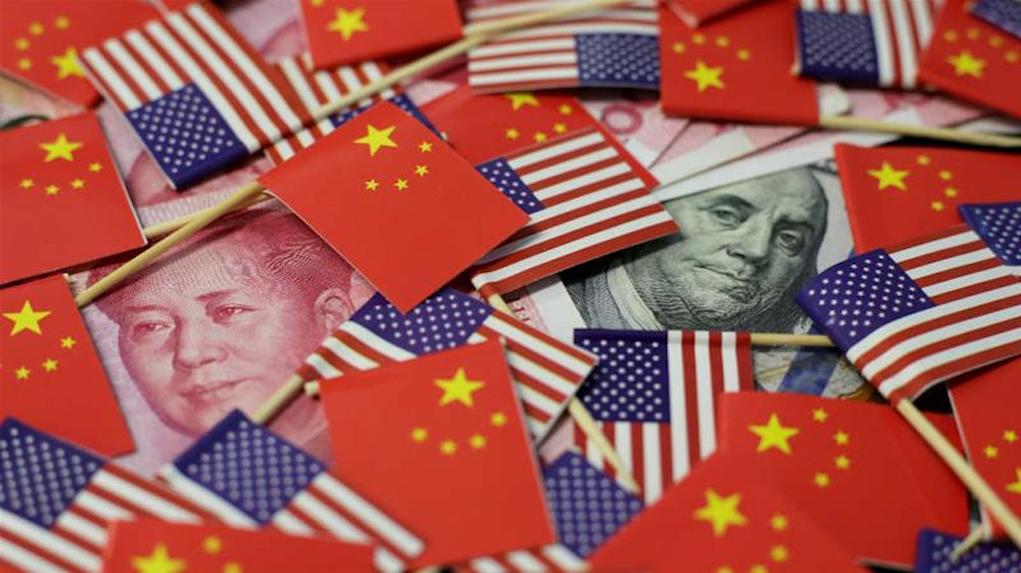
GRACE JANG – OCTOBER 23RD, 2019 EDITORS: SHAWN SHIN, ANDREAS MAASS, AMANDA YAO
Two international affairs have disrupted the world economy over the past couple of years. The first is Britain’s decision to leave the European Union (Brexit), which has been lagging since the June 2016 referendum and will remain inconclusive until the end of this month. The other is the US-China trade war, which has escalated into an endless succession of tit-for-tat trade restrictions that began last June. These events impact not only the stock market and trade industry, but also people’s daily lives as they learn to cope with the fluctuating prices of foreign currency, imported goods, and even homes. For economists, these two parallel events provide an excellent context for studying the relationship between international affairs and national economies, specifically for exploring answers to a question that trails these events: what are the effects of shifting foreign relations on economic activities within a country?
Economics isn’t just about concrete figures like cost and profit, but also about the behavior of economic agents; consumer and investor sentiments strongly drive their decision-making, which in turn has profound impacts on economic variables such as supply and demand. Intuitively, Brexit and the US-China trade war are comparable in that they have both affected consumer sentiment in the UK and the US respectively, with UK consumer confidence hitting its five-year low fuelled by Brexit uncertainty and US consumer confidence showing its largest monthly decline in 6 years triggered by trade-war fears. Facing such large-scale and prolonged international events, consumers tend to—or, at least in theory—should feel less certain about the overall state of the economy. This leads to uncertainty about financial prospects, and consumers may become reluctant to engage in such transactions until the situation clears up.
Accordingly, if we take a look at consumer sentiment in the UK, we observe a strong downward trend during our period of interest. The UK’s Consumer Confidence Index (CCI) has largely been decreasing since around May 2015, when the legal basis of a referendum on EU membership was established and spelled trouble ahead for the British people.

Image source: Trading Economics
Counterintuitively, though, the US displays a relatively upbeat pattern of positive sentiment even when we consider the large monthly fall in August 2019. US consumer sentiment has been going through rises and falls since mid-2018, when President Donald Trump and Chairman Xi Jinping demonstrated their intentions by implementing the first tariffs specifically targeting the opposing country. Nevertheless, according to a report by the University of Michigan that conducts the monthly consumer sentiment surveys, consumers have felt “rising levels of economic uncertainty,” and a near record one-third of them negatively mentioned trade policies last month when asked to explain in their own words the factors underlying their economic expectations. Considering that trade policies are the single largest component of the trade war, this suggests that trade policies as part of the US-China trade war are negatively affecting consumer sentiment.
We have a curious discrepancy here: economic theory informs us that the uncertainty resulting from the trade war should negatively influence consumer confidence, and consumers largely demonstrate this in their response to surveys, yet the overall consumer sentiment trend in the US has remained relatively positive. This puzzling situation in the US merits further investigation, and hence will be the focus of the rest of our article. To examine more closely whether the US-China trade war actually affects US consumer sentiment, we test several linear regression models using consumer sentiment data and news articles since January 2018.
Method
On the left-hand side of our models, we have either monthly US consumer sentiment index point or percentage change in consumer sentiment from the previous month. On the right-hand side, we use independent variables that represent various components of the trade war: import-restricting policies (i.e., trade policies implemented by the US or China that reduce Chinese imports into the US), export-restricting policies, import-restricting announcements (i.e., official announcements by the US or Chinese leadership of plans to reduce Chinese imports into the US), export-restricting announcements, and relations (mostly trade talks, but also includes friendly gestures on the US’s or China’s side). A few of our models use independent variables that combine these variables into broader categories: for example, the import variable refers to import-restricting policies or announcements, and the trade variable refers to policies or announcements that restrict either imports or exports. Furthermore, in some of our models, independent variables are indicator variables that take the value of 1 if such events happened in a particular month and 0 if otherwise; in others, independent variables are quantitative variables which denote the number of such events that happened in a particular month.
Our models are specified as follows:
Model 1: consumer sentiment = β0 + β1*import policies + β2*export policies + β3*import announcements + β4*export announcements + β5*relations + ϵ
Model 2: % Δ consumer sentiment = β0 + β1*import policies + β2*export policies + β3*import announcements + β4*export announcements + β5*relations + ϵ
Model 3: consumer sentiment = β0 + β1*frequency of import policies + β2*freq-export-policies + β3*freq-import-announcements + β4*freq-export-announcements + β5*freq-relations + ϵ
Model 4: % Δ consumer sentiment = β0 + β1*frequency of import policies + β2*freq-export-policies + β3*freq-import-announcements + β4*freq-export-announcements + β5*freq-relations + ϵ
Model 5: consumer sentiment = β0 + β1*freq-import + β2*freq-export + β3*freq-relations + ϵ
Model 6: % Δ consumer sentiment = β0 + β1*freq-import + β2*freq-export + β3*freq-relations + ϵ
Model 7: consumer sentiment = β0 + β1*freq-trade + β2* freq-relations + ϵ
Results
The tables below summarize the regression results, with each column corresponding to each model specified above.
Table 1.

Table 2.

According to our regression results, policies that restrict exports (such as the US’s ban on exports to specific Chinese companies and China’s tariff on US exports) have significantly negative effects on the US consumer sentiment. Column (1) in Table 1 shows that the coefficient on export policies is -0.446, meaning that consumer sentiment was on average 0.446 index points lower in the months during which at least one export-restricting policy was implemented than in the months during which no such policy occurred. This negative effect becomes more severe when export-restricting policies happen more frequently in a given month. Column (3) of Table 1 indicates that consumer sentiment decreases by 0.408 index points on average for each additional export-restricting policy implementation. In addition, export-restricting policies have an even more pronounced effect on the monthly percentage change of US consumer sentiment. The effects are significant at the 5% level or highly significant at the 1% level as shown in Table 1, which means that these coefficients are likely to have arisen from an actual effect rather than mere chance.
From these results, we can infer that Americans’ concerns over the economic impacts of their country’s trade war with China have more to do with a potential decline in exports than with a potential decline in imports. This aligns with the popular belief that exports increase the national GDP whereas imports have a mixed effect on the national GDP. This also may explain why US consumer sentiment hasn’t shown a strong downward trend over the past year; the announcement and implementation of import-restricting policies may have somewhat neutralized the negative effect of export-restricting policy implementation. Moreover, the sizeable effects of export-restricting policies on the monthly percentage change of US consumer sentiment suggest that consumer sentiment is very sensitive to export-restricting policies and shifts dramatically over time depending on whether, and how many, export-restricting policies were implemented in a particular month.
Next, turning to the relations variable, we find that trade talks or other events with a positive connotation for the US-China relations have a significantly negative effect on US consumer sentiment that becomes more pronounced as such events become more frequent. Column (1) in Table 1 shows that US consumer sentiment was on average 0.505 index points lower in the months during which such events happened than in the months during which no such event happened. Columns (3), (5), and (7) reveal that US consumer sentiment rises by about 0.5 index points for every one more incidence of relations-improving event, regardless of which categories of independent variables we use in our models. This may seem surprising, since improvements in bilateral relations should make consumers feel better. But these regression results seem to suggest that consumers take trade talks as signalling future changes in trade policy. Indeed, consumers are averse to unpredictability more than they are enthusiastic for potentially positive changes.
Conclusion
Overall, export-restricting policies like tariffs and relations-improving events like trade talks seem to be detrimental to US consumer sentiment; their coefficients are consistently significant and negative across our seven models. On the other hand, the lack of statistical significance of import-restricting policies and announcements as well as of export-restricting announcements suggests that US consumers are less concerned about a drop in imports than they are with a fall in exports, and they are less affected by the rhetoric of their leaders than they are by the actual implementation of economic policy.
Our analysis helps characterize the recent pattern of US consumer sentiment in response to ongoing hostilities with China, and, more importantly, how US consumers generally react to changes in international diplomacy and policy. Optimistic US consumer sentiment, contrasting with that of the UK in response to Brexit, does not mean that American consumers are unaffected by their country’s trade dispute with China. Worsening foreign relations and the subsequent implementation of protectionist policies have serious repercussions for consumer behavior, which in turn signifies powerful implications extending beyond the national economy. The American consumer is a key player in the global economy at large, and state leaders should carefully consider this fact as they proceed with negotiations – the outcomes of their deliberations will almost certainly have deep and far-reaching impact.
Featured Image Source: The Wall Street Journal
Disclaimer: The views published in this journal are those of the individual authors or speakers and do not necessarily reflect the position or policy of Berkeley Economic Review staff, the Undergraduate Economics Association, the UC Berkeley Economics Department and faculty, or the University of California, Berkeley in general.



